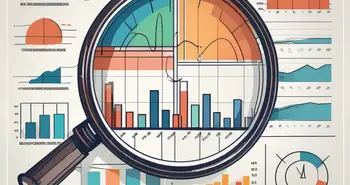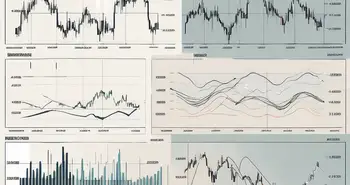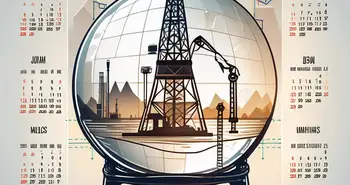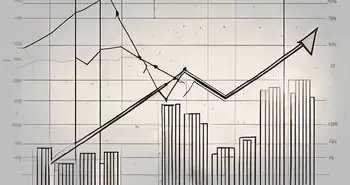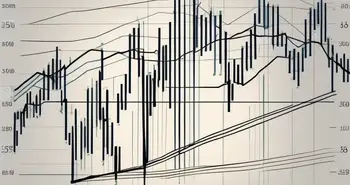Exploring Scarcity Metrics: Understanding Stock-to-Flow, Scarcity Index, and More

Scarcity is a fundamental concept in economics, and understanding its metrics is crucial for decision-making in various industries. In this article, we will delve into the world of scarcity metrics, focusing on two key factors: the stock-to-flow ratio and the scarcity index. Additionally, we will explore other metrics, such as the reserve-to-production ratio and the depletion time metric. So let's dive in and explore the fascinating realm of scarcity metrics!
Defining Scarcity Metrics
Before we explore specific scarcity metrics, let's take a moment to understand what scarcity means in economics. Scarcity refers to the limited availability of resources relative to the demand for those resources. It is a fundamental concept that drives economic decisions at both the micro and macro levels.
Metrics, on the other hand, are quantitative measures used to assess various aspects of scarcity. They provide valuable insights into the availability, sustainability, and value of resources in different contexts.
The Concept of Scarcity in Economics
In economics, scarcity is a central principle that underlies almost all economic theories and models. It posits that because resources are limited, individuals, organizations, and societies must make choices about how to allocate those resources efficiently.
For example, in a world of scarce resources, a country may choose to prioritize the production of essential goods, like food and medicine, over luxury goods. This prioritization reflects the scarcity of resources and aims to meet the basic needs of the population.
The Role of Metrics in Measuring Scarcity
The role of metrics in measuring scarcity cannot be underestimated. Metrics provide a tangible way to assess the availability and value of resources, helping individuals and organizations make informed decisions.
By analyzing scarcity metrics, policymakers can identify potential resource shortages, investors can evaluate the long-term viability of investments, and economists can better understand the dynamics of supply and demand.
Metrics also enable us to compare resource scarcity across different industries, regions, and time periods. This comparative analysis helps identify trends, patterns, and potential risks associated with scarcity.
The Stock-to-Flow Ratio
One of the most influential scarcity metrics is the stock-to-flow ratio. This ratio measures the existing stock of a resource relative to its annual production, providing insights into scarcity dynamics.
Understanding the Stock-to-Flow Ratio
The stock-to-flow ratio expresses the scarcity of a resource by comparing the existing stockpile (the stock) to the annual production rate (the flow). The higher the ratio, the scarcer the resource is considered to be.
For instance, gold has a high stock-to-flow ratio because its existing stock significantly exceeds its annual production. This high ratio indicates scarcity, as gold is relatively difficult to mine and produce in large quantities.
Application of Stock-to-Flow in Various Industries
The stock-to-flow ratio has found applications in various industries, including finance, commodities trading, and cryptocurrencies. Investors often use this metric to evaluate the scarcity and potential value of assets.
For example, in the world of cryptocurrencies, Bitcoin has gained attention due to its limited supply and high stock-to-flow ratio. Many believe that this scarcity makes Bitcoin a potentially valuable store of wealth.
The Scarcity Index
Another important metric in assessing scarcity is the scarcity index. This index provides a comprehensive measure of scarcity, taking into account multiple factors that influence resource availability.
The Basics of the Scarcity Index
The scarcity index goes beyond simple ratios and incorporates various qualitative and quantitative parameters to measure scarcity comprehensively. It considers factors such as demand-supply dynamics, market trends, production costs, and geopolitical influences.
By analyzing these factors collectively, the scarcity index provides a holistic view of resource scarcity, giving decision-makers a more nuanced understanding of the challenges they face.
Interpreting Scarcity Index Values
The scarcity index typically presents its values on a scale, allowing for a quick interpretation of the level of scarcity. Higher index values indicate greater scarcity, while lower values represent a more abundant resource.
For example, if the scarcity index of a particular metal is trending upwards, it suggests that its availability is dwindling, potentially impacting its price and overall market dynamics.
Other Scarcity Metrics
Besides the stock-to-flow ratio and the scarcity index, there are several other metrics that help evaluate and understand scarcity dynamics. Two notable metrics in this domain are the reserve-to-production ratio and the depletion time metric.
The Reserve-to-Production Ratio
The reserve-to-production ratio measures the number of years a particular resource can be produced at current rates before its reserves are depleted. It provides insights into the sustainability and longevity of resource extraction.
For instance, if a country has significant oil reserves but a relatively low reserve-to-production ratio, it indicates that the extraction rate is higher than the rate of replenishment, raising concerns about long-term sustainability.
The Depletion Time Metric
The depletion time metric estimates the time it takes for a resource to be completely exhausted, based on its current usage rate. It helps in assessing the urgency of finding alternative sources or managing consumption patterns.
For example, the depletion time metric can be used to evaluate the long-term viability of fossil fuel-based energy systems and the need for renewable energy transitions.
The Importance of Scarcity Metrics
Scarcity metrics play a crucial role in strategic planning, investment decisions, and policy formulation across various sectors. By understanding and leveraging these metrics, businesses and governments can make proactive decisions to mitigate the risks associated with resource scarcity.
Strategic Planning and Scarcity Metrics
For businesses, scarcity metrics are invaluable tools for strategic planning and risk management. By assessing the scarcity of key resources, organizations can diversify supply chains, develop sustainable sourcing strategies, and anticipate market fluctuations.
For instance, a manufacturing company might use scarcity metrics to identify potential disruptions in raw material supply and proactively secure alternative sources to minimize production disruptions.
Scarcity Metrics in Investment Decisions
Investors also rely heavily on scarcity metrics when evaluating potential investments. By analyzing the scarcity of resources, they can identify emerging market opportunities and allocate capital strategically.
Furthermore, scarcity metrics enable investors to assess the long-term potential of assets, anticipate price movements, and make informed decisions regarding resource-intensive industries.
Personal Advice: As an expert in scarcity metrics, I would like to emphasize the importance of adopting a proactive approach in resource management. By leveraging scarcity metrics, individuals and organizations can anticipate and mitigate the challenges associated with resource scarcity. Regularly monitoring and analyzing these metrics can help identify potential risks, uncover investment opportunities, and drive sustainable decision-making.
FAQ
What are scarcity metrics?
Scarcity metrics are quantitative measures used to assess the availability, sustainability, and value of resources in different contexts. They provide valuable insights into scarcity dynamics and help individuals and organizations make informed decisions.
What is the stock-to-flow ratio?
The stock-to-flow ratio measures the existing stock of a resource relative to its annual production. It is an important scarcity metric that helps determine the scarcity of resources, with higher ratios indicating greater scarcity.
How does the scarcity index work?
The scarcity index is a comprehensive metric that considers multiple factors, such as demand-supply dynamics, market trends, production costs, and geopolitical influences, to measure scarcity. It provides a holistic view of resource scarcity and aids decision-makers in understanding the challenges they face.
What is the importance of scarcity metrics?
Scarcity metrics are crucial for strategic planning, investment decisions, and policy formulation. By understanding and leveraging these metrics, businesses and governments can proactively manage resource scarcity, mitigate risks, and drive sustainable decision-making.
What can individuals do to address resource scarcity?
Individually, we can contribute to addressing resource scarcity by adopting sustainable consumption patterns, promoting recycling and waste reduction, and supporting renewable energy initiatives. By making conscious choices, we can collectively make a significant impact on sustainable resource management.
In conclusion, scarcity metrics offer valuable insights into resource availability and value. By understanding and leveraging these metrics, we can make informed decisions, manage risks, and drive sustainable practices in various sectors. Whether it's the stock-to-flow ratio, the scarcity index, or other metrics, incorporating them into decision-making processes leads to a more resilient and prosperous future. So let's embrace the power of scarcity metrics and pave the way for a more sustainable world.
As you consider the implications of scarcity metrics on your investment strategies, remember that tools like Morpher can enhance your trading experience. Morpher.com‘s innovative platform allows you to trade a variety of asset classes with zero fees, infinite liquidity, and the option for fractional investing. Whether you're looking to diversify your portfolio with cryptocurrencies or take advantage of market trends with Virtual Futures, Morpher empowers you with the flexibility and control to navigate the complexities of scarcity in the markets. Ready to transform your trading journey? Sign Up and Get Your Free Sign Up Bonus today and join the future of investing with Morpher.

Disclaimer: All investments involve risk, and the past performance of a security, industry, sector, market, financial product, trading strategy, or individual’s trading does not guarantee future results or returns. Investors are fully responsible for any investment decisions they make. Such decisions should be based solely on an evaluation of their financial circumstances, investment objectives, risk tolerance, and liquidity needs. This post does not constitute investment advice.

Painless trading for everyone
Hundreds of markets all in one place - Apple, Bitcoin, Gold, Watches, NFTs, Sneakers and so much more.

Painless trading for everyone
Hundreds of markets all in one place - Apple, Bitcoin, Gold, Watches, NFTs, Sneakers and so much more.

